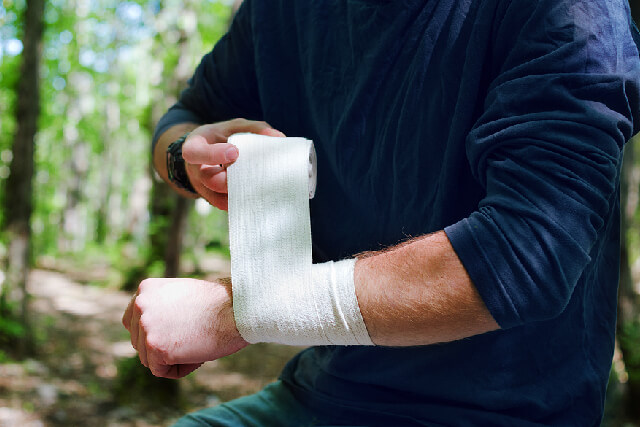
It is not far-fetched to imagine that you are on a trip, either solo or with a group, and the worst possible case occurs-sickness strikes or an injury occurs. These unwanted events can ruin plans, incur extra costs, and even lead to far worse circumstances.
While peace of mind can easily be attained thanks to the presence of readily-available, worldwide medical evacuation, there is no denying the fact that the first responder will always be the ones already on the scene. More often than not, in addition to being injured, you will have to tend to yourself before any external help intervenes.
As such, you should make the effort and put aside some time to equip yourself with basic lifesaving skills. Hence, read on to find out how you can be prepared for the next trip while waiting for help to arrive with these two basic lifesaving skills.
Performing CPR
Cardiopulmonary resuscitation, abbreviated to CPR for brevity, is defined as an emergency lifesaving procedure for when a person does not show any signs of life. This also includes being unconscious, unresponsive, or exhibiting difficulty in breathing or lack thereof.
When CPR is performed immediately, it becomes most successful and can even increase the chances of survival from cardiac arrest by up to twofold to threefold. The bottom line is that not only will CPR be a fine addition to your array of skills, but it will also give you peace of mind and confidence in your travels. To acquire certification for this valuable skill, a Google search is sure to have training centres turning up near your area.
Dressing a wound
Improper care of a wound can lead to grim consequences. While a small nick may pose no issue, the same can’t be said for more severe cuts. In general, there are two types to be aware of: lacerations and puncture wounds. A laceration is a type of injury that occurs when a sharp object cuts through soft body tissue and the outer skin.
On the other hand, a puncture wound is usually caused by sharp, pointy objects. The severity of the damage it causes may vary depending on the size of the foreign element. The process of administering first aid for these wounds is virtually the same. The steps to remember are as follows:
Wash or sterilise your hands
Wash your hands to prevent infection when performing the first-aid procedure.
Stop the bleeding
Gently apply pressure with a fresh bandage or cloth. If possible, keep the wounded part elevated and above the heart. Allow the clotting process to progress and avoid repeatedly removing the dressing. Doing so will disturb the clotting and prolong the bleeding.
Cleanse the wound
A critical step to further avoid infection, clean the wound with clean water or a saline solution once the bleeding has been controlled.
Apply an antibiotic solution
As a final security measure, apply an antibiotic on the wound. Either cream or ointment form will suffice. The latter may cause rashes in some individuals, so it is advisable to stop using it and immediately seek professional care.
Cover the wound
Cover up the treated area with another clean bandage or cloth. Regularly change the dressing (and reapply the antibiotic when doing so) daily until healed.
If the wound shows no sign of healing or other symptoms begin to show, immediately see a doctor for assistance.
Conclusion
Getting injured is the last thing anyone wants when they are away on unfamiliar lands. But in the event the worst-case scenario happens, it is crucial to know how to tend to yourself or your companions while your international air ambulance is still on the way.
These are only some of the many skills you can learn to better prepare yourself for your future trips. But even with all the preparation in the world, there are cases when only professionals can help. As such, familiarising yourself with the right company for medical evacuation is highly advised.

